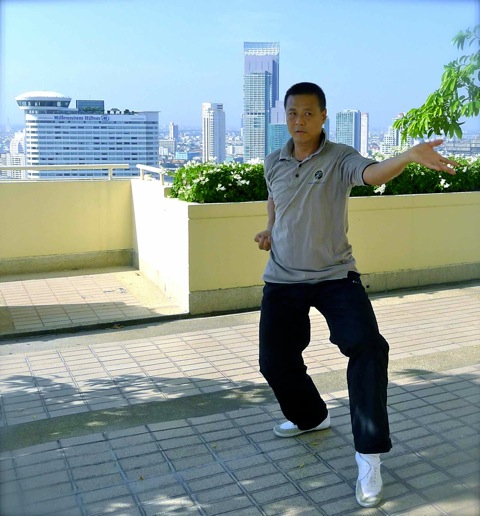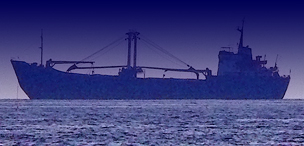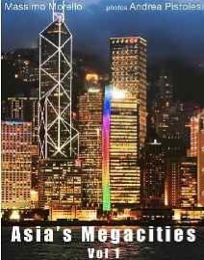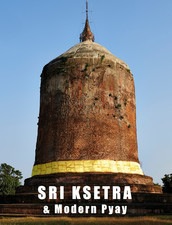The Master on the roof
15/05/12 06:24 Filed in: Logbook
“When the disciple is ready, the Master will appear”, goes the saying. I sure didn’t feel ready at all, but the Master appeared. It was just before sundown, above the Chao Phraya, the river that crosses Bangkok, with the tower of a pagoda in the background. Of course, he did not just materialise in mid-air. Like me, he was standing on the blooming rooftop terrace on top of the Baan Chao Phraya, the big tall tenement block where I live.
The Master is called Jackie Ho. It sounds like such a typical ‘Master’ name or an echo of Jackie Chan that it doesn’t ring true. But Jackie Ho is a chef, actually the Executive Chef of all Chinese cuisine at the Peninsula Hotel, one of the most luxurious hotels in the capital of the Kingdom of Thailand. He used to hold the same job at the excellent China House restaurant inside the Oriental Hotel. He has also worked in Indonesia, China and his birthplace, Hong Kong. He is considered a Master of Cantonese cuisine.
But I hadn’t invited him that night to show me his cooking skills. That evening he was moving fast, focused, precise and powerful in a form of kung fu. I had asked him if he could teach me and he had agreed. So, according to the ancient rules, he was now my Sifu, or Master. Or almost, given that in order to use this term I would have to be formally accepted as his pupil, with ceremony attached.
Only later did I ask him what particular martial art he practised. He told me it is called Hung Fut Pai and is a style deriving, as they all do, from that practised at the Shaolin monastery. It is not well known and has an uncertain history, at least for those who, like me, are unable to consult Chinese texts. Master Jackie learned it as a child in Hong Kong and has continued to train ever since. To him it is the most effective form of self-defence, and has had to use it on occasion to defend himself from street thugs. He showed me a scar from a knife wound on his forearm. “But they came out much worse”, he laughed.
My training began that evening. Every morning at 8 I go to the rooftop terrace. And I wait. Sometimes the Master comes and teaches me some of the basic form of Hung Fut Pai – I don’t yet know how many moves it contains – more often than not he doesn’t come and I try to repeat the moves I learned the previous session, generally with little success. There is a kind of tacit agreement between us: we don’t make appointments, or set dates or times. We leave it up to chance, to coincidence. Sometimes we miss each other by just a few minutes and find out only later when we bump into each other on the boat taking us to and from home.
According to Jackie, it takes one month to learn the first form, but after a month I understood he meant thirty lessons, which meant that I would take much longer. In the meantime it’s an exercise in patience, a way to begin the day with commitment. It doesn’t matter if it doesn’t work out; it gives you the chance to enjoy the last minutes of cool up on the roof before the heat of the day arrives, shake off your sleepiness and dreams, focus on the body, the breathing, the blood flow and the little aches and pains.

This is one of those stories that in the Japanese tradition (yes, let’s mix up those cultures) is called zuihitsu, literally follow the brush, in reference to the fact that the author gives free reign to his thoughts, allowing the hand to simply record them. You might compare it to a hotchpotch or a collection of random thoughts. In reality it is an actual literary genre (which emerged in the Heian Period, between 794 and 1185 of the Common Era) and refers to a collection of brief pieces in which “the observations and reflections of the writer are presented with stylistic grace”.
Grace and style aside, this story is a pretext for reflecting on the randomness and on the surprises that the world has in store for us, especially in this part of the world, where chance is incorporated into the natural order of things, it is part of a plot. In short, it’s no mere chance. And that is why the Master appears.
The Master is called Jackie Ho. It sounds like such a typical ‘Master’ name or an echo of Jackie Chan that it doesn’t ring true. But Jackie Ho is a chef, actually the Executive Chef of all Chinese cuisine at the Peninsula Hotel, one of the most luxurious hotels in the capital of the Kingdom of Thailand. He used to hold the same job at the excellent China House restaurant inside the Oriental Hotel. He has also worked in Indonesia, China and his birthplace, Hong Kong. He is considered a Master of Cantonese cuisine.
But I hadn’t invited him that night to show me his cooking skills. That evening he was moving fast, focused, precise and powerful in a form of kung fu. I had asked him if he could teach me and he had agreed. So, according to the ancient rules, he was now my Sifu, or Master. Or almost, given that in order to use this term I would have to be formally accepted as his pupil, with ceremony attached.
Only later did I ask him what particular martial art he practised. He told me it is called Hung Fut Pai and is a style deriving, as they all do, from that practised at the Shaolin monastery. It is not well known and has an uncertain history, at least for those who, like me, are unable to consult Chinese texts. Master Jackie learned it as a child in Hong Kong and has continued to train ever since. To him it is the most effective form of self-defence, and has had to use it on occasion to defend himself from street thugs. He showed me a scar from a knife wound on his forearm. “But they came out much worse”, he laughed.
My training began that evening. Every morning at 8 I go to the rooftop terrace. And I wait. Sometimes the Master comes and teaches me some of the basic form of Hung Fut Pai – I don’t yet know how many moves it contains – more often than not he doesn’t come and I try to repeat the moves I learned the previous session, generally with little success. There is a kind of tacit agreement between us: we don’t make appointments, or set dates or times. We leave it up to chance, to coincidence. Sometimes we miss each other by just a few minutes and find out only later when we bump into each other on the boat taking us to and from home.
According to Jackie, it takes one month to learn the first form, but after a month I understood he meant thirty lessons, which meant that I would take much longer. In the meantime it’s an exercise in patience, a way to begin the day with commitment. It doesn’t matter if it doesn’t work out; it gives you the chance to enjoy the last minutes of cool up on the roof before the heat of the day arrives, shake off your sleepiness and dreams, focus on the body, the breathing, the blood flow and the little aches and pains.

This is one of those stories that in the Japanese tradition (yes, let’s mix up those cultures) is called zuihitsu, literally follow the brush, in reference to the fact that the author gives free reign to his thoughts, allowing the hand to simply record them. You might compare it to a hotchpotch or a collection of random thoughts. In reality it is an actual literary genre (which emerged in the Heian Period, between 794 and 1185 of the Common Era) and refers to a collection of brief pieces in which “the observations and reflections of the writer are presented with stylistic grace”.
Grace and style aside, this story is a pretext for reflecting on the randomness and on the surprises that the world has in store for us, especially in this part of the world, where chance is incorporated into the natural order of things, it is part of a plot. In short, it’s no mere chance. And that is why the Master appears.
0 Comments





